As Flight Directors, You Are In Charge Of A Lot Of The Operations, But Do You Ever Get To Experience
as flight directors, you are in charge of a lot of the operations, but do you ever get to experience handling controls or zero gravity simulation? do you have to know every aspect of everyone's job?
More Posts from Nasa and Others
Get Ready to Watch Us Go for GOLD
The boundary where Earth’s atmosphere gives way to outer space is a complex place: Atmospheric waves driven by weather on Earth compete with electric and magnetic fields that push charged particles, all while our signals and satellites whiz by.

On Jan. 25, we’re launching the GOLD instrument (short for Global-scale Observations of the Limb and Disk) to get an exciting new birds-eye view of this region, Earth’s interface to space.

High above the ozone layer, the Sun’s intense radiation cooks some of the particles in the upper atmosphere into an electrically charged soup, where negatively charged electrons and positively charged ions flow freely. This is the ionosphere. The ionosphere is co-mingled with the highest reaches of our planet’s neutral upper atmosphere, called the thermosphere.
Spanning from just a few dozen to several hundred miles above Earth’s surface, the ionosphere is increasingly part of the human domain. Not only do our satellites, including the International Space Station, fly through this region, but so do the signals that are part of our communications and navigation systems, including GPS. Changes in this region can interfere with satellites and signals alike.

Conditions in the upper atmosphere are difficult to predict, though. Intense weather, like hurricanes, can cause atmospheric waves to propagate all the way up to this region, creating winds that change its very makeup.

Because it’s made up of electrically charged particles, the upper atmosphere also responds to space weather. Space weather – which is usually driven by activity on the Sun – often results in electric and magnetic fields that push and pull on the ionosphere’s charged particles, changing the region’s makeup. On top of that, space weather can also mean incoming showers of high-energy particles that can affect satellites or endanger astronauts, and, in extreme cases, even cause power outages on Earth.

That’s where GOLD comes in. GOLD takes advantage of its host satellite’s geostationary orbit over the Western Hemisphere to maintain a constant view of the upper atmosphere, day and night. By scanning across, GOLD builds up a complete picture of Earth’s disk every half hour.

GOLD is an imaging spectrograph, a type of instrument that breaks light down into its component wavelengths. Studying light in this way lets scientists track the movement and temperatures of different chemical species and build up a picture of how the upper atmosphere changes over time. Capturing these measurements several times a day means that, for the first time, scientists will be able to record the short-term changes in the region -- our first look at its day-to-day ‘weather.’

GOLD is our first-ever mission to fly as a hosted payload on a commercial satellite. A hosted payload flies aboard an otherwise unrelated satellite, hitching a ride to space. GOLD studies the upper atmosphere, while its host satellite supports commercial communications.
Later this year, we’re launching another mission to study the ionosphere: ICON, short for Ionospheric Connection Explorer. Like GOLD, ICON studies Earth’s interface to space, but with a few important distinctions. ICON employs a suite of different instruments to study the ionosphere both remotely and in situ. The direct in situ measurements are possible because ICON flies in low-Earth orbit, giving us a detailed view to complement GOLD’s global perspective of the regions that both missions study.

How to watch the launch on Jan. 25
Arianespace, a commerical aerospace company, is launching GOLD’s host commercial communications satellite, SES-14, for SES from Kourou, French Guiana.
Watch liftoff live on NASA Television - nasa.gov/live Launch Coverage starts at 5 p.m. EST (2 p.m. PST, 7 p.m. Kourou local time)
We’ll be streaming the launch live on NASA TV! You can also follow along on Twitter (@NASA and @NASASun), Facebook (NASA and NASA Sun Science), Instagram, and on our Snapchat (NASA).
Make sure to follow us on Tumblr for your regular dose of space: http://nasa.tumblr.com.

It’s Not a Phase – We Love the Moon
International Observe the Moon Night is Oct. 21 and everyone's invited! Find a Moon-gazing party near you, learn about lunar science and exploration, and honor cultural connections to the moon.
This year, we want to know what the Moon looks like around you. Take a look at these photography tips, then snap a picture of the Moon and tag us! You may be featured on Tumblr’s Today page on Oct. 21.

In case you missed it earlier in July, here’s a look at how our view of Pluto has changed over the course of several decades. The first frame is a digital zoom-in on Pluto as it appeared upon its discovery by Clyde Tombaugh in 1930 (image courtesy Lowell Observatory Archives). The other images show various views of Pluto as seen by NASA’s Hubble Space Telescope beginning in the 1990s and NASA’s New Horizons spacecraft in 2015. The final sequence zooms in to a close-up frame of Pluto released on July 15, 2015.
This amazing view of details on Pluto came via New Horizons, which launched on Jan. 19, 2006. New Horizons swung past Jupiter for a gravity boost and scientific studies in February 2007, and conducted a reconnaissance flyby study of Pluto and its moons in summer 2015. Pluto closest approach occurred on July 14, 2015. As part of an extended mission, the spacecraft is expected to head farther into the Kuiper Belt to examine one or two of the ancient, icy mini-worlds in that vast region, at least a billion miles beyond Neptune’s orbit.
Image credits available here.
Solar System: Things to Know This Week
In addition to the Mercury transit of the sun today, there are a few other things you should know about our solar system this week:
1. Mars, Ready for its Close-Up
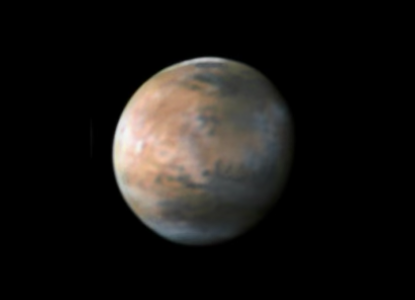
Mars will soon be closer to Earth than it has been for 11 years, presenting a great opportunity for backyard sky watchers.
2. Fire and Ice
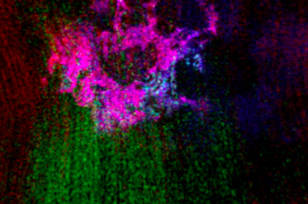
Our spacecraft have an even closer view of Mars, and that fact regularly leads to some intriguing discoveries. The latest: volcanoes may have erupted beneath an ice sheet there billions of years ago. The above image is a mineral map of part of the Martian surface.
3. Icy Hydra

Meanwhile, our New Horizons spacecraft has sent home the first compositional data about Pluto's four small moons. The new data show the surface of Hydra is dominated by nearly pristine water ice--confirming hints that scientists picked up in images showing Hydra's highly reflective surface.
4. Ceres, Ever Sharper

The mission director for our Dawn mission writes, "Ceres, which only last year was hardly more than a fuzzy blob against the stars, is now a richly detailed world, and our portrait grows more elaborate every day."
5. Join us at Jupiter

Our Juno mission arrives at the giant planet on Jul. 4. Meanwhile, all amateur astronomers are invited to take part in a worldwide effort to identify potential observations for the spacecraft to make once it's in orbit. Find out how to join HERE.
Want to learn more? Read our full list of the 10 things to know this week about the solar system HERE.
Make sure to follow us on Tumblr for your regular dose of space: http://nasa.tumblr.com
Our Most “Liked” Instagram Posts of 2017
Our Instagram page has over 2,200 images and is lucky enough to be followed by more than 29 million fans.
What images and videos were your favorite from this past year? Great question, and one we asked ourselves too!
Here’s a look at our most liked Instagram posts* of 2017…Enjoy!
#10 Black Hole Collision

What happens when two supermassive black holes collide? Until last year, we weren’t quite sure. Gravitational waves! With 834,169 likes, this image is our 10th most liked of 2017.
#9 Italy Through the Space Station Cupola Window

European astronaut Paolo Nespoli (@Astro_Paolo) shared this image on social media of "Southern #Italy and Sicily framed by one of our Cupola windows" aboard the International Space Station. This image ranks #9 for 2017 with 847,365 likes.
#8 Black Hole Friday

For our 5th annual #BlackHoleFriday we’ll share awesome images and facts about black holes! A black hole is a place in space where gravity pulls so much that even light cannot get out. With 916,247 likes, this picture ranks #8 for 2017.
#7 The Elements of Cassiopeia A

Did you know that stellar explosions and their remains--“supernova remnants”--are a source of chemical elements essential for life here on Earth? A new Chandra X-ray Observatory image captures the location of several vital elements like silicon (red), sulfur (yellow), calcium (green) and iron (purple), located on Cassiopeia A--a supernova remnant ~11,000 light years from Earth. This image ranks #7 for 2017 with 943,806 likes.
#6 Jupiter Blues

Jupiter, you’re bluetiful 💙 ! Churning swirls of Jupiter’s clouds are seen in striking shades of blue in this new view taken by our Juno spacecraft. This image ranks as our sixth most liked Instagram post of 2017 with 990,944 likes.
#5 An Interstellar Visitor

An interstellar visitor…scientists have confirmed that an intriguing asteroid that zipped through our solar system in October is the first confirmed object from another star! Observations suggest that this unusual object had been wandering through the Milky Way, unattached to any star system, for hundreds of millions of years before its chance encounter with our star system. With 1,015,721 likes, this image ranks #5 for 2017.
#4 Space Station Lunar Transit

Space station supermoon. This composite image made from six frames shows the International Space Station, with a crew of six onboard, as it transits the Moon at roughly five miles per second on Dec. 2. This image ranks #4 for 2017 with 1,037,520 likes.
#3 The Space Between Us
A post shared by NASA (@nasa) on Dec 20, 2017 at 2:56pm PST
The beautiful space between Earth and the International Space Station was immortalized by NASA astronaut Mark Vande Hei while orbiting 250 miles above the planet we call home. This majestic image ranks #3 for 2017 with 1,042,403 likes.
#2 The Moon Swallows the Sun
A post shared by NASA (@nasa) on Aug 21, 2017 at 2:03pm PDT
Today, the Sun disappeared, seemingly swallowed by our Moon–at least for a while. The August 21 solar eclipse cut through a swath of North America from coast to coast and those along the path of totality, that is where the Moon completely covered the Sun, were faced with a sight unseen in the U.S. in 99 years. Which might have something to do with this image ranking #2 for 2017 with 1,144,503 likes.
#1 Solar Eclipse Over Cascade Lake
A post shared by NASA (@nasa) on Aug 21, 2017 at 3:57pm PDT
Behold! This progression of the partial solar eclipse took place over Ross Lake, in Northern Cascades National Park, Washington on Monday, Aug. 21, 2017.
This photo was our #1 image of 2017 with 1,471,114 likes!
See them all here!
Do you want to get amazing images of Earth from space, see distant galaxies and more on Instagram? Of course you do! Follow us: https://www.instagram.com/nasa/
*Posts and rankings are were taken as of Dec. 28, 2017.
Make sure to follow us on Tumblr for your regular dose of space: http://nasa.tumblr.com.
GPS: Coming to a Moon Near You!

The next generation of lunar explorers – the Artemis generation – will establish a sustained presence on the Moon, making revolutionary discoveries, prospecting for resources and proving technologies key to future deep space exploration. To support these ambitions, our navigation engineers are developing an architecture that will provide accurate, robust location services all the way out to lunar orbit.
How? We’re teaming up with the U.S. Air Force to extend the use of GPS in space by developing advanced space receivers capable of tracking weak GPS signals far out in space.

Spacecraft near Earth have long relied on GPS signals for navigation data, just as users on the ground might use their phones to maneuver through a highway system. Below approximately 1,860 miles, spacecraft in low-Earth orbit can rely on GPS for near-instantaneous location data. This is an enormous benefit to these missions, allowing many satellites the autonomy to react and respond to unforeseen events without much hands-on oversight.

Beyond this altitude, navigation becomes more challenging. To reliably calculate their position, spacecraft must use signals from the global navigation satellite system (GNSS), the collection of international GPS-like satellite constellations. The region of space that can be serviced by these satellites is called the Space Service Volume, which extends from 1,860 miles to about 22,000 miles, or geosynchronous orbit.

In this area of service, missions don’t rely on GNSS signals in the same way one would on Earth or in low-Earth orbit. They orbit too high to “see” enough signals from GNSS satellites on their side of the globe, so they must rely on signals from GNSS satellite signals spilling over to the opposite side of the globe. This is because the Earth blocks the main signals of these satellites, so the spacecraft must “listen” for the fainter signals that extend out from the sides of their antennas, known as “side-lobes.”

Though 22,000 miles is considered the end of the Space Service Volume, that hasn’t stopped our engineers from reaching higher. In fact, our simulations prove that GNSS signals could even be used for reliable navigation in lunar orbit, far outside the Space Service Volume, over 200,000 miles from Earth. We’re even planning to use GNSS signals in the navigation architecture for the Gateway, an outpost in orbit around the Moon that will enable sustained lunar surface exploration.

It’s amazing that the same systems you might use to navigate the highways are putting us on the path forward to the Moon!
Make sure to follow us on Tumblr for your regular dose of space: http://nasa.tumblr.com.
Black Marble: NASA View Illuminates Earth at Night
When the sun goes down, the lights on Earth shine bright. A new look using our satellite data captures the lights coming from our neighborhoods, vehicles, buildings, factories, fishing vessels and other human activity brightening the night.

Our scientists have just released the first new global map of Earth at night since 2012. This nighttime view of our home planet, dubbed the Black Marble, provides researchers with a unique perspective of human activities around the globe.
By studying Earth at night, researchers can investigate how and why cities expand, monitor light intensity to estimate energy use and economic activity, and aid in disaster response in near-real time.

The data on Earth at night comes from the Visible Infrared Imaging Radiometer Suite (VIIRS) instrument on the Suomi National Polar-orbiting Partnership satellite, jointly managed by NASA and the National Oceanic and Atmospheric Administration (NOAA).
VIIRS captures visible and infrared light, allowing researchers to glimpse the Earth as it looks to astronauts peering out of the International Space Station. The new map is a composite of data collected in 2016, and it took several months of processing to filter out clouds, moonlight, airglow, and other interfering features to create the global image. In the coming months our scientists will release daily nighttime lights data at even finer resolutions for the first time.

The East Coast sparkles with population hubs, suburbs circling cities and major roadways. The I-95 corridor includes the most densely populated region of the United States – the stretch from Washington, DC to Boston.
To get images like these from the satellite data, our scientists had to filter out moonlight, aerosols and other sources of extraneous light – the goal is to eventually be able to detect the lights from a single building or fishing boat.

Daytime satellite images, like this one from Landsat 8, can show us the forests, deserts, mountains, waterways and built-up cities. Add a nighttime view, and scientists can study when and how people are using these limited resources – like the lights tracing the Nile River leading to the metropolis of Cairo, Egypt.

Lights aren’t confined to land. With the global nighttime view, the ocean is dotted with fishing fleets, including boats that try to attract their catch with bright lights.

What lights illuminate your neighborhood? Download a high-resolution version of the Black Marble HERE, and find out more about our new night lights data HERE.
Make sure to follow us on Tumblr for your regular dose of space: http://nasa.tumblr.com
10 Things Einstein Got Right
One hundred years ago, on May 29, 1919, astronomers observed a total solar eclipse in an ambitious effort to test Albert Einstein’s general theory of relativity by seeing it in action. Essentially, Einstein thought space and time were intertwined in an infinite “fabric,” like an outstretched blanket. A massive object such as the Sun bends the spacetime blanket with its gravity, such that light no longer travels in a straight line as it passes by the Sun.
This means the apparent positions of background stars seen close to the Sun in the sky – including during a solar eclipse – should seem slightly shifted in the absence of the Sun, because the Sun’s gravity bends light. But until the eclipse experiment, no one was able to test Einstein’s theory of general relativity, as no one could see stars near the Sun in the daytime otherwise.
The world celebrated the results of this eclipse experiment— a victory for Einstein, and the dawning of a new era of our understanding of the universe.
General relativity has many important consequences for what we see in the cosmos and how we make discoveries in deep space today. The same is true for Einstein's slightly older theory, special relativity, with its widely celebrated equation E=mc². Here are 10 things that result from Einstein’s theories of relativity:

1. Universal Speed Limit
Einstein's famous equation E=mc² contains "c," the speed of light in a vacuum. Although light comes in many flavors – from the rainbow of colors humans can see to the radio waves that transmit spacecraft data – Einstein said all light must obey the speed limit of 186,000 miles (300,000 kilometers) per second. So, even if two particles of light carry very different amounts of energy, they will travel at the same speed.
This has been shown experimentally in space. In 2009, our Fermi Gamma-ray Space Telescope detected two photons at virtually the same moment, with one carrying a million times more energy than the other. They both came from a high-energy region near the collision of two neutron stars about 7 billion years ago. A neutron star is the highly dense remnant of a star that has exploded. While other theories posited that space-time itself has a "foamy" texture that might slow down more energetic particles, Fermi's observations found in favor of Einstein.

2. Strong Lensing
Just like the Sun bends the light from distant stars that pass close to it, a massive object like a galaxy distorts the light from another object that is much farther away. In some cases, this phenomenon can actually help us unveil new galaxies. We say that the closer object acts like a “lens,” acting like a telescope that reveals the more distant object. Entire clusters of galaxies can be lensed and act as lenses, too.
When the lensing object appears close enough to the more distant object in the sky, we actually see multiple images of that faraway object. In 1979, scientists first observed a double image of a quasar, a very bright object at the center of a galaxy that involves a supermassive black hole feeding off a disk of inflowing gas. These apparent copies of the distant object change in brightness if the original object is changing, but not all at once, because of how space itself is bent by the foreground object’s gravity.
Sometimes, when a distant celestial object is precisely aligned with another object, we see light bent into an “Einstein ring” or arc. In this image from our Hubble Space Telescope, the sweeping arc of light represents a distant galaxy that has been lensed, forming a “smiley face” with other galaxies.

3. Weak Lensing
When a massive object acts as a lens for a farther object, but the objects are not specially aligned with respect to our view, only one image of the distant object is projected. This happens much more often. The closer object’s gravity makes the background object look larger and more stretched than it really is. This is called “weak lensing.”
Weak lensing is very important for studying some of the biggest mysteries of the universe: dark matter and dark energy. Dark matter is an invisible material that only interacts with regular matter through gravity, and holds together entire galaxies and groups of galaxies like a cosmic glue. Dark energy behaves like the opposite of gravity, making objects recede from each other. Three upcoming observatories -- Our Wide Field Infrared Survey Telescope, WFIRST, mission, the European-led Euclid space mission with NASA participation, and the ground-based Large Synoptic Survey Telescope --- will be key players in this effort. By surveying distortions of weakly lensed galaxies across the universe, scientists can characterize the effects of these persistently puzzling phenomena.
Gravitational lensing in general will also enable NASA’s James Webb Space telescope to look for some of the very first stars and galaxies of the universe.

4. Microlensing
So far, we’ve been talking about giant objects acting like magnifying lenses for other giant objects. But stars can also “lens” other stars, including stars that have planets around them. When light from a background star gets “lensed” by a closer star in the foreground, there is an increase in the background star’s brightness. If that foreground star also has a planet orbiting it, then telescopes can detect an extra bump in the background star’s light, caused by the orbiting planet. This technique for finding exoplanets, which are planets around stars other than our own, is called “microlensing.”
Our Spitzer Space Telescope, in collaboration with ground-based observatories, found an “iceball” planet through microlensing. While microlensing has so far found less than 100 confirmed planets, WFIRST could find more than 1,000 new exoplanets using this technique.

5. Black Holes
The very existence of black holes, extremely dense objects from which no light can escape, is a prediction of general relativity. They represent the most extreme distortions of the fabric of space-time, and are especially famous for how their immense gravity affects light in weird ways that only Einstein’s theory could explain.
In 2019 the Event Horizon Telescope international collaboration, supported by the National Science Foundation and other partners, unveiled the first image of a black hole’s event horizon, the border that defines a black hole’s “point of no return” for nearby material. NASA's Chandra X-ray Observatory, Nuclear Spectroscopic Telescope Array (NuSTAR), Neil Gehrels Swift Observatory, and Fermi Gamma-ray Space Telescope all looked at the same black hole in a coordinated effort, and researchers are still analyzing the results.

6. Relativistic Jets
This Spitzer image shows the galaxy Messier 87 (M87) in infrared light, which has a supermassive black hole at its center. Around the black hole is a disk of extremely hot gas, as well as two jets of material shooting out in opposite directions. One of the jets, visible on the right of the image, is pointing almost exactly toward Earth. Its enhanced brightness is due to the emission of light from particles traveling toward the observer at near the speed of light, an effect called “relativistic beaming.” By contrast, the other jet is invisible at all wavelengths because it is traveling away from the observer near the speed of light. The details of how such jets work are still mysterious, and scientists will continue studying black holes for more clues.

7. A Gravitational Vortex
Speaking of black holes, their gravity is so intense that they make infalling material “wobble” around them. Like a spoon stirring honey, where honey is the space around a black hole, the black hole’s distortion of space has a wobbling effect on material orbiting the black hole. Until recently, this was only theoretical. But in 2016, an international team of scientists using European Space Agency's XMM-Newton and our Nuclear Spectroscopic Telescope Array (NUSTAR) announced they had observed the signature of wobbling matter for the first time. Scientists will continue studying these odd effects of black holes to further probe Einstein’s ideas firsthand.
Incidentally, this wobbling of material around a black hole is similar to how Einstein explained Mercury’s odd orbit. As the closest planet to the Sun, Mercury feels the most gravitational tug from the Sun, and so its orbit’s orientation is slowly rotating around the Sun, creating a wobble.

8. Gravitational Waves
Ripples through space-time called gravitational waves were hypothesized by Einstein about 100 years ago, but not actually observed until recently. In 2016, an international collaboration of astronomers working with the Laser Interferometer Gravitational-Wave Observatory (LIGO) detectors announced a landmark discovery: This enormous experiment detected the subtle signal of gravitational waves that had been traveling for 1.3 billion years after two black holes merged in a cataclysmic event. This opened a brand new door in an area of science called multi-messenger astronomy, in which both gravitational waves and light can be studied.
For example, our telescopes collaborated to measure light from two neutron stars merging after LIGO detected gravitational wave signals from the event, as announced in 2017. Given that gravitational waves from this event were detected mere 1.7 seconds before gamma rays from the merger, after both traveled 140 million light-years, scientists concluded Einstein was right about something else: gravitational waves and light waves travel at the same speed.

9. The Sun Delaying Radio Signals
Planetary exploration spacecraft have also shown Einstein to be right about general relativity. Because spacecraft communicate with Earth using light, in the form of radio waves, they present great opportunities to see whether the gravity of a massive object like the Sun changes light’s path.
In 1970, our Jet Propulsion Laboratory announced that Mariner VI and VII, which completed flybys of Mars in 1969, had conducted experiments using radio signals — and also agreed with Einstein. Using NASA’s Deep Space Network (DSN), the two Mariners took several hundred radio measurements for this purpose. Researchers measured the time it took for radio signals to travel from the DSN dish in Goldstone, California, to the spacecraft and back. As Einstein would have predicted, there was a delay in the total roundtrip time because of the Sun’s gravity. For Mariner VI, the maximum delay was 204 microseconds, which, while far less than a single second, aligned almost exactly with what Einstein’s theory would anticipate.
In 1979, the Viking landers performed an even more accurate experiment along these lines. Then, in 2003 a group of scientists used NASA’s Cassini Spacecraft to repeat these kinds of radio science experiments with 50 times greater precision than Viking. It’s clear that Einstein’s theory has held up!

10. Proof from Orbiting Earth
In 2004, we launched a spacecraft called Gravity Probe B specifically designed to watch Einstein’s theory play out in the orbit of Earth. The theory goes that Earth, a rotating body, should be pulling the fabric of space-time around it as it spins, in addition to distorting light with its gravity.
The spacecraft had four gyroscopes and pointed at the star IM Pegasi while orbiting Earth over the poles. In this experiment, if Einstein had been wrong, these gyroscopes would have always pointed in the same direction. But in 2011, scientists announced they had observed tiny changes in the gyroscopes’ directions as a consequence of Earth, because of its gravity, dragging space-time around it.

BONUS: Your GPS! Speaking of time delays, the GPS (global positioning system) on your phone or in your car relies on Einstein’s theories for accuracy. In order to know where you are, you need a receiver – like your phone, a ground station and a network of satellites orbiting Earth to send and receive signals. But according to general relativity, because of Earth’s gravity curving spacetime, satellites experience time moving slightly faster than on Earth. At the same time, special relativity would say time moves slower for objects that move much faster than others.
When scientists worked out the net effect of these forces, they found that the satellites’ clocks would always be a tiny bit ahead of clocks on Earth. While the difference per day is a matter of millionths of a second, that change really adds up. If GPS didn’t have relativity built into its technology, your phone would guide you miles out of your way!
Make sure to follow us on Tumblr for your regular dose of space: http://nasa.tumblr.com.
How Do Space Telescopes Break Down Light?
Space telescopes like Hubble and our upcoming James Webb Space Telescope use light not only to create images, but can also break light down into individual colors (or wavelengths). Studying light this way can give us a lot of detail about the object that emitted that light. For example, studying the components of the light from exoplanets can tell us about its atmosphere’s color, chemical makeup, and temperature. How does this work?
Remember the primary colors you learned about in elementary school?
Those colors are known as the pigment or subtractive colors. Every other color is some combination of the primary colors: red, yellow, and blue.

Light also has its own primary colors, and they work in a similar way. These colors are known as additive or light colors.
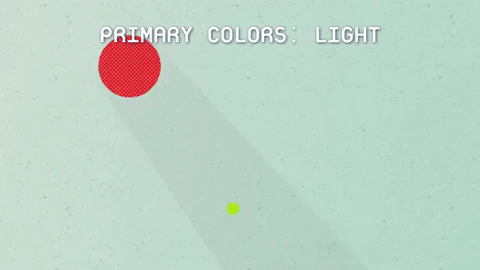
TVs make use of light’s colors to create the pictures we see. Each pixel of a TV screen contains some amount of red, green and blue light. The amount of each light determines the overall color of the pixel. So, each color on the TV comes from a combination of the primary colors of light: red, green and blue.

Space telescope images of celestial objects are also a combination of the colors of light.
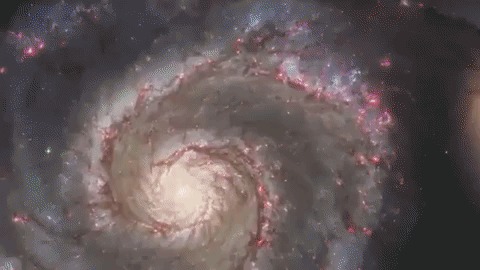
Every pixel that is collected can be broken down into its base colors. To learn even more, astronomers break the red, green and blue light down into even smaller sections called wavelengths.
This breakdown is called a spectrum.
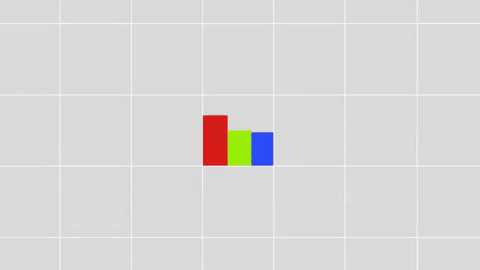
With the right technology, every pixel of light can also be measured as a spectrum.

Images show us the big picture, while a spectrum reveals finer details. Astronomers use spectra to learn things like what molecules are in planet atmospheres and distant galaxies.
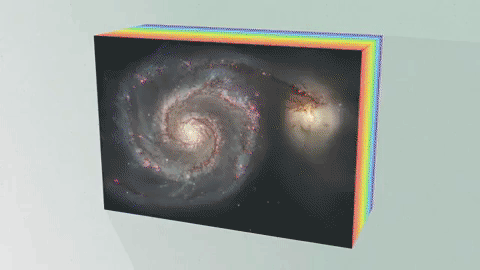
An Integral Field Unit, or IFU, is a special tool on the James Webb Space Telescope that captures images and spectra at the same time.
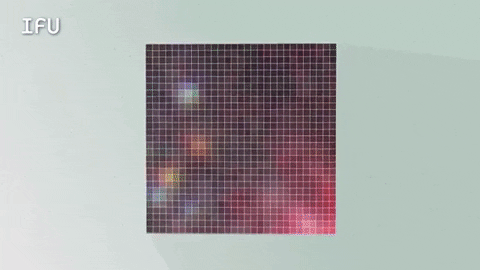
The IFU creates a unique spectrum for each pixel of the image the telescope is capturing, providing scientists with an enormous amount of valuable, detailed data. So, with an IFU we can get an image, many spectra and a better understanding of our universe.
Watch the full video where this method of learning about planetary atmospheres is explained:
The James Webb Space Telescope is our upcoming infrared space observatory, which will launch in 2021. It will spy the first galaxies that formed in the universe and shed light on how galaxies evolve, how stars and planetary systems are born and tell us about potentially habitable planets around other stars.
To learn more about NASA’s James Webb Space Telescope, visit the website, or follow the mission on Facebook, Twitter and Instagram.
Text and graphics credit: Space Telescope Science Institute
Make sure to follow us on Tumblr for your regular dose of space: http://nasa.tumblr.com.
From Earth to the Moon: How Are We Getting There?

More than 45 years since humans last set foot on the lunar surface, we’re going back to the Moon and getting ready for Mars. The Artemis program will send the first woman and next man to walk on the surface of the Moon by 2024, establish sustainable lunar exploration and pave the way for future missions deeper into the solar system.
Getting There

Our powerful new rocket, the Space Launch System (SLS), will send astronauts aboard the Orion spacecraft a quarter million miles from Earth to lunar orbit. The spacecraft is designed to support astronauts traveling hundreds of thousands of miles from home, where getting back to Earth takes days rather hours.
Lunar Outpost

Astronauts will dock Orion at our new lunar outpost that will orbit the Moon called the Gateway. This small spaceship will serve as a temporary home and office for astronauts in orbit between missions to the surface of the Moon. It will provide us and our partners access to the entire surface of the Moon, including places we’ve never been before like the lunar South Pole. Even before our first trip to Mars, astronauts will use the Gateway to train for life far away from Earth, and we will use it to practice moving a spaceship in different orbits in deep space.
Expeditions to the Moon

The crew will board a human landing system docked to the Gateway to take expeditions down to the surface of the Moon. We have proposed using a three-stage landing system, with a transfer vehicle to take crew to low-lunar orbit, a descent element to land safely on the surface, and an ascent element to take them back to the Gateway.
Return to Earth

Astronauts will ultimately return to Earth aboard the Orion spacecraft. Orion will enter the Earth’s atmosphere traveling at 25,000 miles per hour, will slow to 300 mph, then parachutes will deploy to slow the spacecraft to approximately 20 mph before splashing down in the Pacific Ocean.
Red Planet

We will establish sustainable lunar exploration within the next decade, and from there, we will prepare for our next giant leap – sending astronauts to Mars!
Discover more about our plans to go to the Moon and on to Mars: https://www.nasa.gov/moontomars
Make sure to follow us on Tumblr for your regular dose of space: http://nasa.tumblr.com.
-
 gopaulz-blog liked this · 1 month ago
gopaulz-blog liked this · 1 month ago -
 andy202405 liked this · 1 month ago
andy202405 liked this · 1 month ago -
 ebro-airlock-1 reblogged this · 10 months ago
ebro-airlock-1 reblogged this · 10 months ago -
 ebropreviews reblogged this · 10 months ago
ebropreviews reblogged this · 10 months ago -
 ebropreviews reblogged this · 10 months ago
ebropreviews reblogged this · 10 months ago -
 squidymcsquod liked this · 1 year ago
squidymcsquod liked this · 1 year ago -
 asikan liked this · 1 year ago
asikan liked this · 1 year ago -
 herefortea01 liked this · 1 year ago
herefortea01 liked this · 1 year ago -
 xenia12 liked this · 1 year ago
xenia12 liked this · 1 year ago -
 norzairies liked this · 1 year ago
norzairies liked this · 1 year ago -
 greatsweetscrusade liked this · 1 year ago
greatsweetscrusade liked this · 1 year ago -
 aloneinthedark-eagle liked this · 1 year ago
aloneinthedark-eagle liked this · 1 year ago -
 cromithius liked this · 1 year ago
cromithius liked this · 1 year ago -
 hyodojo liked this · 1 year ago
hyodojo liked this · 1 year ago -
 buttaboomsworld liked this · 1 year ago
buttaboomsworld liked this · 1 year ago -
 1982will liked this · 1 year ago
1982will liked this · 1 year ago -
 absolutesciencefiction reblogged this · 1 year ago
absolutesciencefiction reblogged this · 1 year ago -
 androidsghost liked this · 1 year ago
androidsghost liked this · 1 year ago -
 saltcoated-things liked this · 1 year ago
saltcoated-things liked this · 1 year ago -
 ghstbusting reblogged this · 1 year ago
ghstbusting reblogged this · 1 year ago -
 hear-the-robin-go-tweet liked this · 1 year ago
hear-the-robin-go-tweet liked this · 1 year ago -
 theindieprincessblog reblogged this · 1 year ago
theindieprincessblog reblogged this · 1 year ago -
 geirhildur liked this · 1 year ago
geirhildur liked this · 1 year ago -
 asongpanda1 liked this · 1 year ago
asongpanda1 liked this · 1 year ago -
 sourapplecore liked this · 1 year ago
sourapplecore liked this · 1 year ago -
 maximumfuckingsass liked this · 1 year ago
maximumfuckingsass liked this · 1 year ago -
 theredshoes liked this · 1 year ago
theredshoes liked this · 1 year ago -
 princesadivana liked this · 1 year ago
princesadivana liked this · 1 year ago -
 totally-not-one-of-the-fae liked this · 1 year ago
totally-not-one-of-the-fae liked this · 1 year ago -
 ca44en liked this · 1 year ago
ca44en liked this · 1 year ago -
 diving-llama reblogged this · 1 year ago
diving-llama reblogged this · 1 year ago -
 drakonofabird liked this · 1 year ago
drakonofabird liked this · 1 year ago -
 techtainia reblogged this · 1 year ago
techtainia reblogged this · 1 year ago -
 itsgerges reblogged this · 1 year ago
itsgerges reblogged this · 1 year ago -
 itsgerges liked this · 1 year ago
itsgerges liked this · 1 year ago -
 whyhellotheregandalf liked this · 1 year ago
whyhellotheregandalf liked this · 1 year ago -
 e-de-emperatriz liked this · 1 year ago
e-de-emperatriz liked this · 1 year ago -
 urcaptainvrodani liked this · 1 year ago
urcaptainvrodani liked this · 1 year ago -
 lemon-paradox reblogged this · 1 year ago
lemon-paradox reblogged this · 1 year ago -
 taonf reblogged this · 1 year ago
taonf reblogged this · 1 year ago -
 sagchild71 liked this · 1 year ago
sagchild71 liked this · 1 year ago -
 disastermychild liked this · 1 year ago
disastermychild liked this · 1 year ago -
 wisegladiatorkitty liked this · 1 year ago
wisegladiatorkitty liked this · 1 year ago -
 marycorleone liked this · 1 year ago
marycorleone liked this · 1 year ago -
 funlandflask liked this · 1 year ago
funlandflask liked this · 1 year ago
Explore the universe and discover our home planet with the official NASA Tumblr account
1K posts